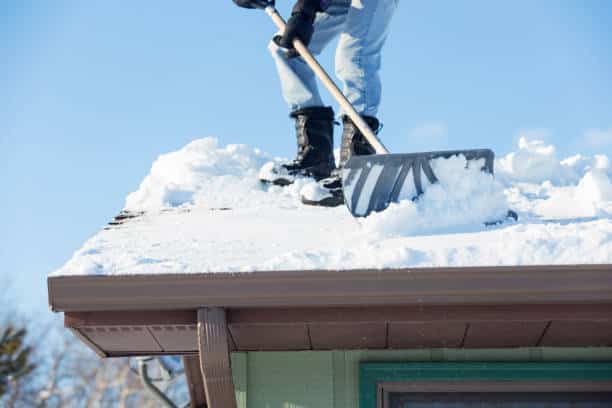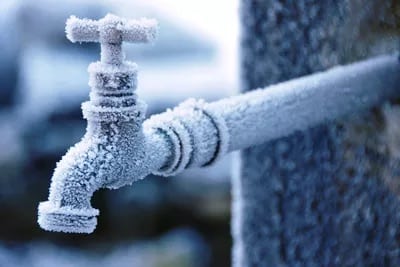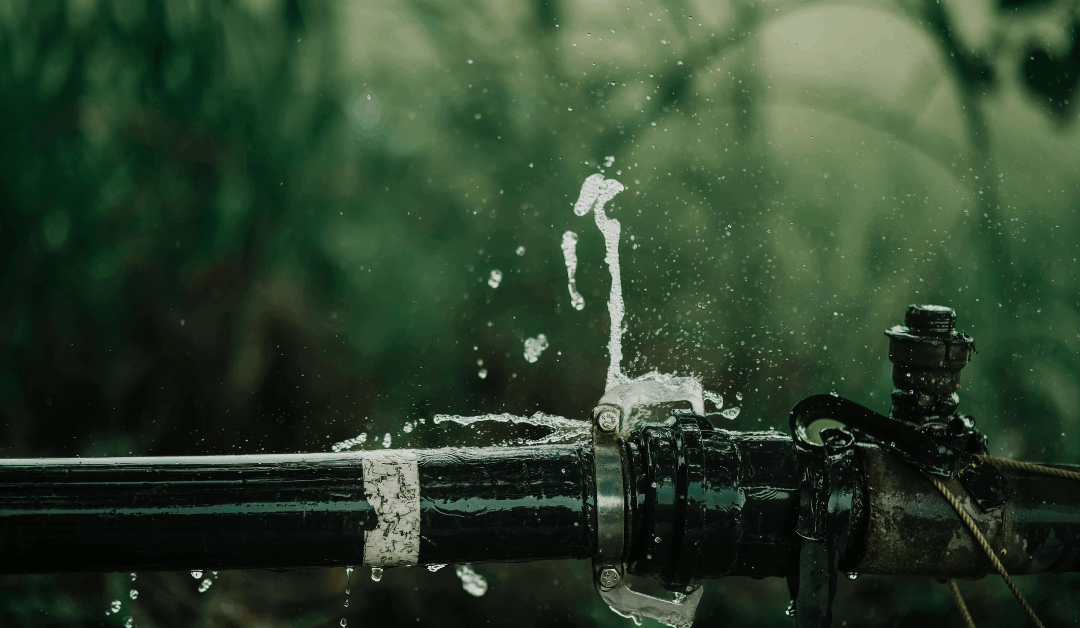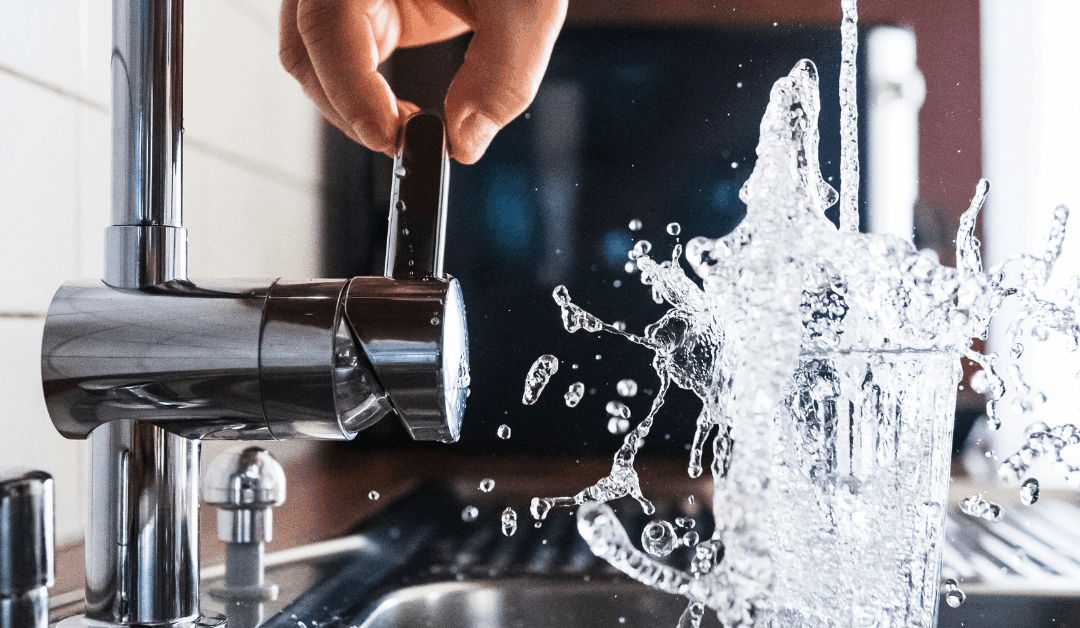As a Maryland plumber with over 35 years of experience, I’ve seen firsthand how freezing temperatures can wreak havoc on a home’s plumbing system. One minute you’re enjoying a mild December afternoon, and the next, a sudden cold snap drops temperatures below freezing, putting your home at serious risk. Maryland’s fluctuating winter weather is notorious for causing burst pipes, ice dams, and the kind of costly water damage that can ruin your holidays.
Every winter, my team and I respond to emergency calls from homeowners dealing with flooded basements and frozen pipes—disasters that could have often been prevented with a few simple steps. The winter months don’t have to be a source of stress. A little preparation goes a long way in protecting your property and ensuring your family stays warm and comfortable.
At MD Sewer & Plumbing, we believe prevention is the best protection. That’s why I’ve put together this comprehensive guide on how to winterize a house. It’s packed with the same advice I give my own family and neighbors, covering everything you need to do before the cold weather truly sets in.
Schedule Service Online
Get a free estimate so you know what you're signing up for
"*" indicates required fields
For Emergency Services Call: 410-255-9300

What Does It Mean to Winterize a House?
So, what exactly does it mean to “winterize” a house? Think of it as bundling up your home before the winter chill hits. Winterizing is the process of preparing your home—specifically your plumbing system, water lines, and heating system—to withstand the freezing temperatures of the winter season. The primary goal is to prevent water from freezing, expanding, and causing pipes to burst, which can lead to thousands of dollars in water damage.
A properly winterized home is not only protected from plumbing disasters but is also more energy-efficient. Sealing up drafts and ensuring your heating system runs smoothly can significantly lower your energy bills.
The basics of winterizing include:
- Draining exterior water lines: This includes outdoor spigots, garden hoses, and sprinkler systems.
- Insulating vulnerable pipes: Exposed pipes in unheated areas like basements, crawl spaces, and garages are at high risk.
- Sealing air leaks: Cracks and gaps around windows, doors, and foundations can let cold air in and cause pipes to freeze.
- Servicing your heating system and water heater: Ensuring these critical appliances are in top shape before you need them most.
By taking these steps, you’re creating a protective shield around your home that will keep it safe and functional throughout the winter months.
Step-by-Step: How to Winterize a House Like a Pro
Ready to get started? Here’s a detailed breakdown of how to winterize your home’s plumbing system. Follow these steps to protect your property and gain peace of mind.
1. Shut Off and Drain Outdoor Water Line Sources
The first and most critical step is to address all outdoor water sources. Any water left in outdoor faucets or irrigation lines is almost certain to freeze and cause a burst pipe.
- Disconnect and drain garden hoses: Disconnect all hoses from your outdoor spigots. Drain them completely and store them in a garage or shed.
- Turn off outdoor spigots: Locate the shut-off valve for each outdoor spigot. This is usually found in your basement, crawl space, or a utility closet. Turn the valve clockwise to shut off the water supply.
- Drain the spigot: After shutting off the valve, go back outside and open the spigot to let any remaining water drain out. This ensures no water is trapped inside to freeze.
- Pro-Tip: Consider installing frost-free spigots. These are designed to shut off the water supply deep inside your home’s heated wall, which prevents freezing and makes winterizing much easier next season.
2. Insulate Exposed Pipes
Any uninsulated pipes located in unheated areas are vulnerable. This includes pipes in basements, crawl spaces, attics, garages, and even inside cabinets against an exterior wall.
- Use foam pipe sleeves: These are inexpensive and easy to install. Simply cut them to length and wrap them around your pipes. You can find them at any local hardware store.
- Apply heat tape: For pipes that are extremely vulnerable or have frozen in the past, electrical heat tape provides an active source of warmth. It automatically turns on when the temperature drops, preventing freezing.
- Check for cold air: A good rule of thumb is: if you can feel cold air where your pipes are, your pipes can freeze. Seal any drafts you find near your plumbing.
Insulating pipes not only prevents freezing but also helps your water heater work more efficiently by reducing heat loss as hot water travels through your home.
3. Seal Gaps and Add Weather Stripping
Cold air is the enemy of your plumbing system. Sealing gaps and cracks around your home keeps warm air in and cold air out, which protects your pipes and lowers your energy bills.
- Inspect doors and windows: Check for drafts and install weather stripping or caulk where needed. Don’t forget the door to your attached garage.
- Seal foundation cracks: Use caulk or spray foam to fill any gaps around the foundation, especially where utility lines enter the house.
- Check vents and fans: Ensure that dryer vents and exhaust fans close properly when not in use to prevent heat loss.
Even small air leaks can lead to significant energy bills and create cold spots that put your plumbing at risk.
4. Inspect Gutters and Roof for Ice Dams
Ice dams are thick ridges of ice that form along the eaves of your roof. They happen when heat escapes from your attic, melting snow on the roof. The water then runs down and refreezes at the colder edge, blocking proper drainage.
- Clean your gutters: Before winter, make sure your gutters are free of leaves and debris. Clogged gutters can’t drain melting snow, which increases the risk of ice dams and water damage.
- Inspect your attic insulation: Proper attic insulation keeps heat inside your living space and prevents it from escaping into the attic.
A quick pre-winter gutter cleaning is one of the most effective ways to prevent major water damage in the spring.
5. Prepare Your Heating System and Water Heater
Your heating system and water heater work overtime during the winter, so it’s essential to make sure they’re ready for the job.
- Schedule a heating system check-up: Have a professional inspect your furnace or boiler before the first freeze. An annual tune-up ensures it runs safely and efficiently.
- Flush your water heater: Sediment can build up at the bottom of your water heater tank, reducing its efficiency and lifespan. Flushing it once a year helps it run better and last longer.
- Consider a backup heat source: In Maryland, winter power outages are always a possibility. A portable generator or another backup heat source can be a lifesaver if the local power company experiences an outage.
This winter prep ensures you won’t be left in the cold when you need warmth the most.
Winterizing a Vacant House or Property
If you’re a snowbird heading south or a landlord with an empty property, winterizing a vacant home is even more critical. An unoccupied house is much more susceptible to frozen pipes because there’s no daily water usage to keep things flowing.
Here’s how to secure a vacant home:
- Shut off the main water supply: Locate the main water shut-off valve and turn it completely off.
- Drain all water lines: Open every faucet in the house (hot and cold) to drain the entire system. Don’t forget showers, tubs, and toilets. Flush toilets until the tank is empty.
- Add non-toxic antifreeze: Pour a small amount of non-toxic plumbing antifreeze into every drain trap and toilet bowl. This prevents any remaining water from freezing and cracking the porcelain.
- Keep the heat on: Don’t turn the heat completely off. Set the thermostat to a safe minimum temperature, typically around 55°F (13°C), to protect the interior of the home.
- Open cabinet doors: Leave the doors to kitchen and bathroom cabinets open to allow warm air to circulate around the pipes.
How Much Does It Cost to Winterize a House?
The cost of winterizing a house in Maryland can vary. A DIY approach using materials like pipe insulation and caulk might only cost you $50 to $100. If you hire a professional, the cost will depend on the size of your home, the age of your plumbing, and the specific services needed. On average, a professional winterization service can range from $150 to $500.
While there’s an upfront cost, it’s a fraction of what you’d pay to repair the damage from a single burst pipe. At MD Sewer & Plumbing, we offer free estimates and upfront pricing, so there are no surprises. We believe an investment in prevention is always money well spent.
When to Call a Professional Plumber
While many winterizing tasks are DIY-friendly, some situations require an expert. You should call a local plumber if you notice:
- Frozen or burst pipes: If you turn on a faucet and only a trickle comes out, your pipes may be frozen. If you see water damage, you likely have a burst pipe. In either case, shut off your main water supply immediately and call for help.
- Persistent leaks or low water pressure: These could be signs of a bigger issue within your plumbing systems.
- Strange noises from your water heater or boiler: Gurgling or banging sounds can indicate a serious problem that needs immediate attention.
As a local, family-owned plumbing company serving Pasadena and surrounding areas for over 35 years, we’re available 24/7 to handle emergencies—day or night.
Stay Warm, Stay Protected
Winterizing your home doesn’t have to be stressful. By following these steps, you can confidently prepare your house for the cold weather ahead. A little effort now can save you from major headaches and expenses later, allowing you to enjoy a cozy, worry-free winter. With the right steps and a trusted plumber by your side, you can keep your home safe and comfortable all season long.
At MD Sewer & Plumbing, we’ve been helping Maryland homeowners stay ahead of winter for over three decades. We’re more than just plumbers; we’re your neighbors, and we’re always just a call away.
Ready to secure your home for winter?
- Schedule Your Service Today
- Request a Free Estimate
- Call Now for 24/7 Emergencies: 410-255-9300
Frequently Asked Questions
Do I need to shut off my water if I leave for a winter vacation?
Yes. If you’re leaving for more than a few days, it’s always a good idea to shut off your main water supply. This is the single best way to prevent catastrophic water damage if a pipe were to burst while you’re away. Also, be sure to leave your heat on a low setting (around 55°F).
What’s the best temperature to keep my house to prevent pipes from freezing?
Most experts agree that setting your thermostat to at least 55°F (13°C) is a safe minimum to prevent pipes from freezing, even if you’re away from home. On extremely cold nights, you can also let faucets connected to vulnerable pipes drip slowly to keep water moving.
How can I tell if a pipe is frozen?
The most common sign is reduced or no water flow from a faucet. You might also see frost on the outside of the pipe. If you suspect a frozen pipe, shut off the main water supply and call a plumber immediately. Do not use an open flame to thaw a pipe.

Helpful Resources for Winterizing Your Home
Here are seven valuable resources that provide additional information and tips on preparing your home for winter:
- Energy.gov – Weatherizing Your Home
This guide from the U.S. Department of Energy outlines ways to improve your home’s energy efficiency and reduce heating costs during the winter. - American Red Cross – Winter Storm Preparedness
Learn how to prepare your home and family for winter storms with tips on staying safe and warm. - The Spruce – Winterizing Your Home
A detailed checklist for winter home maintenance, covering everything from heating systems to draft-proofing windows. - Centers for Disease Control and Prevention (CDC) – Winter Safety
The CDC offers important indoor safety tips for staying warm and safe during harsh winter conditions. - Bob Vila – Winter Home Maintenance Checklist
Expert advice from Bob Vila on critical tasks to prepare your home for cold temperatures and snow. - Home Depot – How To Winterize A House
Practical advice on winterizing your home, including products and tools to make the process easier. - Family Handyman – Prevent Winter Damage
Discover tips to avoid common and costly winter damages, from frozen pipes to roof leaks.
Each of these resources will arm you with vital knowledge to protect your home and avoid expensive repairs during the winter season.




